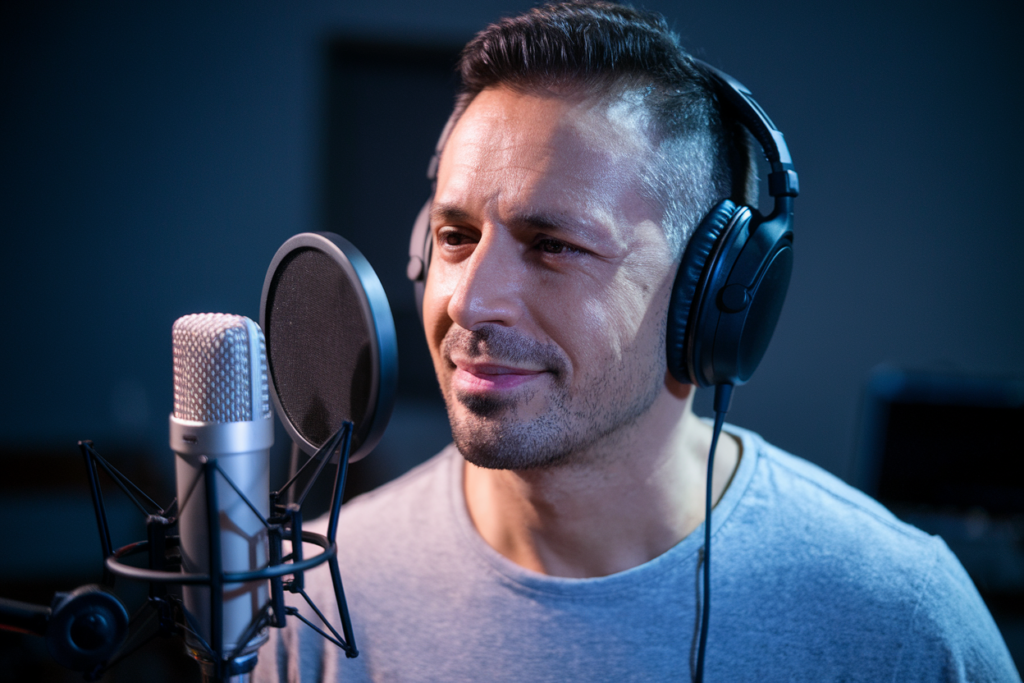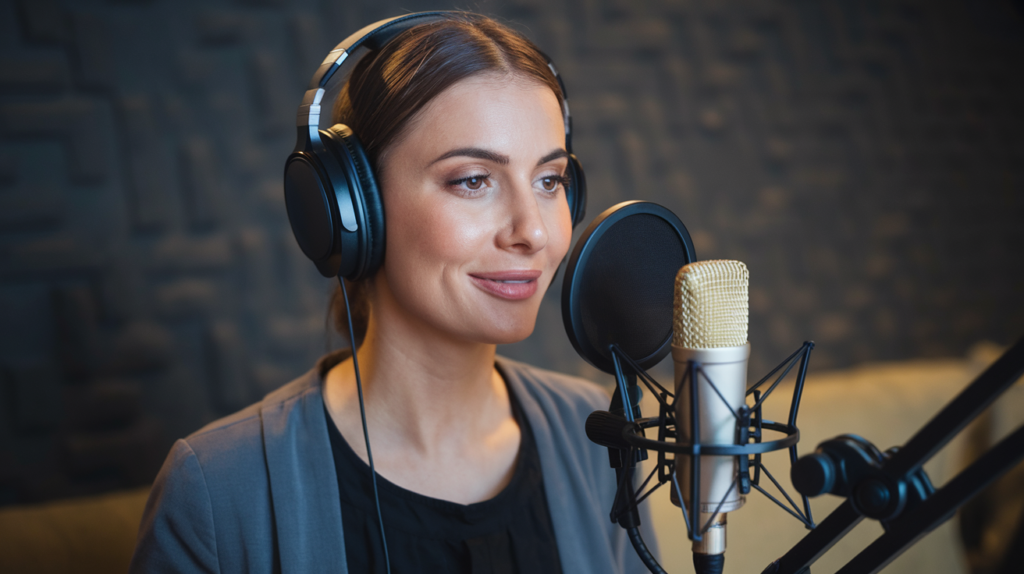Key Takeaways
- Synchronization Issues: Turkish dubbing often suffers from synchronization problems, including mismatched lip movements and timing discrepancies that disrupt viewer engagement.
- Impact on Viewer Experience: Poorly synchronized dialogue can lead to viewer disengagement, making it difficult for audiences to connect with characters and follow the narrative.
- Role of Voice Talent: The effectiveness of dubbing is heavily influenced by the voice talent’s ability to deliver lines in harmony with on-screen actions, capturing the original emotion and pacing.
- Cultural Nuances: Successful Turkish dubbing requires an understanding of cultural nuances to ensure humor and drama resonate well with local audiences.
- Technological Solutions: Advancements in technology, such as AI-driven tools and real-time editing software, can significantly improve synchronization accuracy in dubbing projects.
- Training Opportunities: Comprehensive training for voice actors focused on timing, emotional delivery, and collaboration with directors enhances the overall quality of Turkish dubbing.
Ever noticed how the dialogue in Turkish dubbing sometimes feels off? You’re not alone. Many viewers find themselves frustrated by synchronization issues that disrupt their viewing experience. Whether it’s the timing of voiceovers or mismatched lip movements, these problems can pull you right out of the story.
Overview of Turkish Dubbing
Turkish dubbing plays a crucial role in making foreign films and series accessible to local audiences. It involves replacing original dialogues with Turkish voiceovers, allowing viewers to enjoy content without reading subtitles. However, synchronization issues often arise during this process.
Timing is key in dubbing. If the voiceover doesn’t align with the on-screen dialogue, it disrupts immersion. Mismatched lip movements can be distracting, pulling you out of the story. You may notice that some characters seem to speak too fast or too slow compared to their actual speech.
Choosing the right voice talent significantly impacts the quality of dubbing. Skilled voice artists bring characters to life through tone and emotion, enhancing your viewing experience. Yet, when these elements are poorly executed or mismatched with visuals, it undermines overall engagement.
In addition, cultural nuances must translate effectively within the Turkish context for dubbing to resonate with viewers. A skilled voice actor understands these subtleties and adapts accordingly, ensuring that humor or drama translates well into Turkish culture.
Overall, while Turkish dubbing serves as a vital bridge between global entertainment and local audiences, addressing synchronization problems can elevate its effectiveness significantly.
Common Issues Faced in Turkish Dubbing Sync
Turkish dubbing often presents several synchronization challenges that can impact viewer engagement. Understanding these issues helps improve the overall quality of dubbed content.
Lip Sync Problems
Lip sync problems occur when the dialogue doesn’t match the mouth movements of the characters. This disconnect pulls you out of the narrative, as it’s easy to notice when words don’t align with actions. For a successful viewing experience, voice actors must deliver performances that closely mimic the original timing and emotion. When voiceovers fail to synchronize properly, it can lead to confusion or frustration, making it hard for viewers to stay immersed in the story.
Timing and Rhythm Discrepancies
Timing and rhythm discrepancies present another common issue in Turkish dubbing. If dialogue is delivered too quickly or slowly compared to on-screen action, audiences sense an awkwardness that disrupts their connection with the material. Effective voice talent should adjust their pacing to fit seamlessly within each scene’s context. Properly timed voiceovers enhance dramatic moments and maintain comedic beats, ensuring your audience reacts appropriately without feeling disoriented by mismatches in tempo or flow.
Impact on Audience Reception
Synchronization issues in Turkish dubbing can significantly affect how audiences receive content. When the timing of voiceovers doesn’t align with the visuals, it disrupts immersion and diminishes engagement. Viewers may struggle to connect with characters or follow the narrative if they notice that dialogue doesn’t match lip movements.
Viewer Disengagement
Viewer disengagement often stems from poorly synchronized dialogue. If a character’s mouth moves but the words don’t match, it can create confusion and pull you out of the story. Inconsistent timing in voice delivery may lead to awkward pauses or rushed lines that feel unnatural. This disconnect makes it harder for you to invest emotionally in the characters or plot, resulting in a less enjoyable viewing experience.
Influence on Storytelling
Dubbing influences storytelling by shaping how narratives are conveyed in another language. When voice talent captures emotions effectively through their performance, it enriches the storyline and resonates with audiences. However, if misalignment occurs—like delivering lines too quickly—it can distort pacing and alter intended meanings. Proper synchronization ensures that humor lands as intended and dramatic moments hit hard, preserving the essence of the original work while making it accessible to viewers who rely on Turkish dubbing for understanding.
Solutions and Recommendations
Addressing synchronization issues in Turkish dubbing enhances viewer experience. Implementing specific strategies can significantly improve the quality of voiceovers.
Advancements in Technology
Utilizing cutting-edge technology improves dubbing synchronization. Software solutions that analyze lip movements and match them with dialogue timing create seamless transitions. Real-time editing tools allow voice artists to adjust their performance, ensuring a perfect fit with the original content. Innovations like AI-driven algorithms can even recommend optimal pacing for lines, enhancing overall engagement.
Training for Voice Actors
Investing in comprehensive training for voice actors elevates the quality of Turkish dubbing. Focus on developing skills such as timing, emotional delivery, and cultural interpretation ensures that voice talent conveys the intended message effectively. Workshops emphasizing practice with various genres—be it drama or comedy—prepare voice artists to adapt their performances according to context. Encouraging collaboration between directors and voice actors fosters an environment where constructive feedback drives improvement in sync accuracy and storytelling depth.
Conclusion
Addressing synchronization issues in Turkish dubbing is essential for enhancing your viewing experience. When dialogue doesn’t align with lip movements or when timing feels off, it can break your immersion and connection to the story. Prioritizing skilled voice talent and investing in technology can lead to significant improvements.
It’s crucial for creators to understand how these elements affect audience engagement. By focusing on effective training for voice actors and fostering collaboration between teams, you can help ensure that the essence of foreign narratives shines through seamlessly. Ultimately, overcoming these challenges will make Turkish dubbing a more enjoyable experience for all viewers, bridging the gap between cultures while preserving storytelling integrity.
Frequently Asked Questions
What are the main frustrations viewers have with Turkish dubbing?
Viewers often complain about synchronization issues in Turkish dubbing. Common problems include timing mismatches between voiceovers and on-screen dialogue, as well as lip movements that do not align with the spoken words. These issues can detract from viewer engagement and immersion in the story.
Why is timing important in dubbing?
Timing is crucial in dubbing because misalignment can disrupt a viewer’s immersion. If dialogue delivery is too fast or slow, it creates awkwardness, making it difficult for audiences to connect with characters or follow the narrative effectively.
How does poor voice talent impact the viewing experience?
Poorly chosen voice talent can undermine the quality of dubbing. Skilled voice artists enhance emotional connection through effective tone and delivery, while inadequate performances may lead to confusion and emotional detachment from the story.
What are lip sync problems in Turkish dubbing?
Lip sync problems occur when the spoken dialogue does not match the characters’ mouth movements on screen. This disconnection pulls viewers out of the narrative, harming their overall engagement with the film or series.
How do synchronization issues affect audience reception?
Synchronization issues can diminish audience engagement by making it hard for viewers to connect with characters or follow narratives. Misaligned dialogue often leads to confusion, reducing emotional involvement and enjoyment of the story.
What solutions exist for improving Turkish dubbing synchronization?
Solutions include advancements in technology like software for analyzing lip movements and real-time editing tools. Additionally, investing in training programs for voice actors focusing on timing, emotional delivery, and cultural nuances can significantly improve synchronization accuracy.
Why is cultural interpretation important in Turkish dubbing?
Cultural interpretation ensures that humor and drama resonate well with local audiences. Effective translation of cultural nuances helps maintain storytelling integrity while making foreign films relatable to Turkish viewers, enhancing their overall experience.
What role does collaboration play in improving dubbing quality?
Collaboration between directors and voice actors fosters an environment conducive to constructive feedback. Workshops focused on honing skills such as timing and emotional delivery help elevate sync accuracy and deepen storytelling effectiveness in dubbed content.







